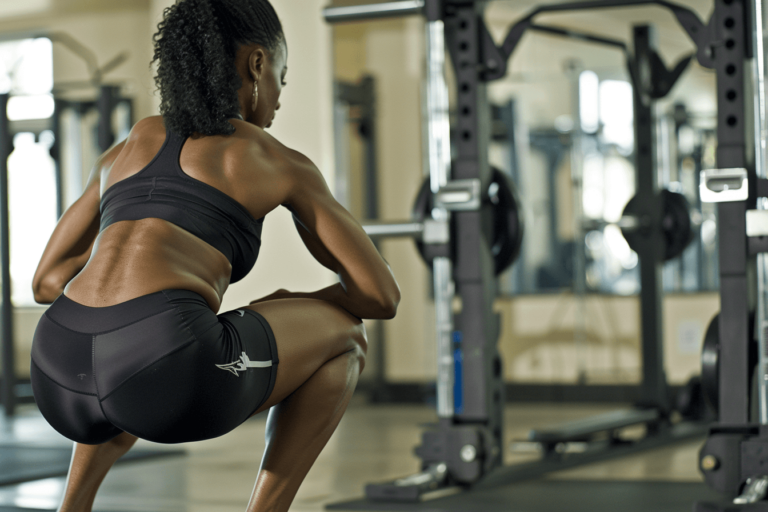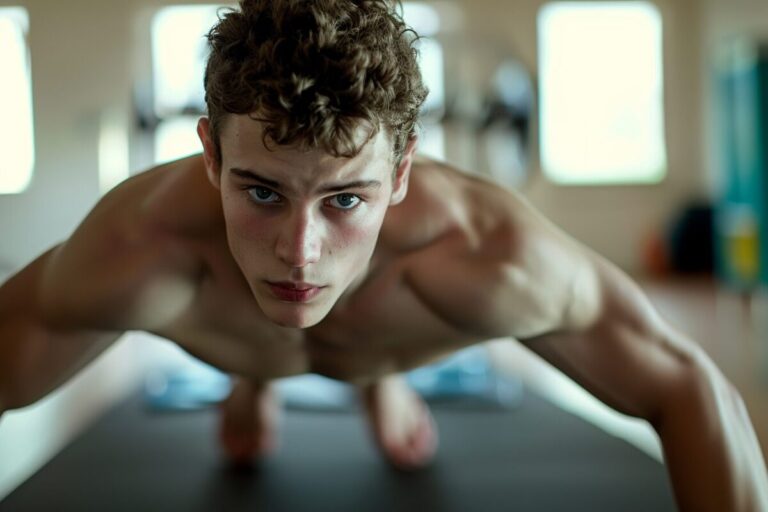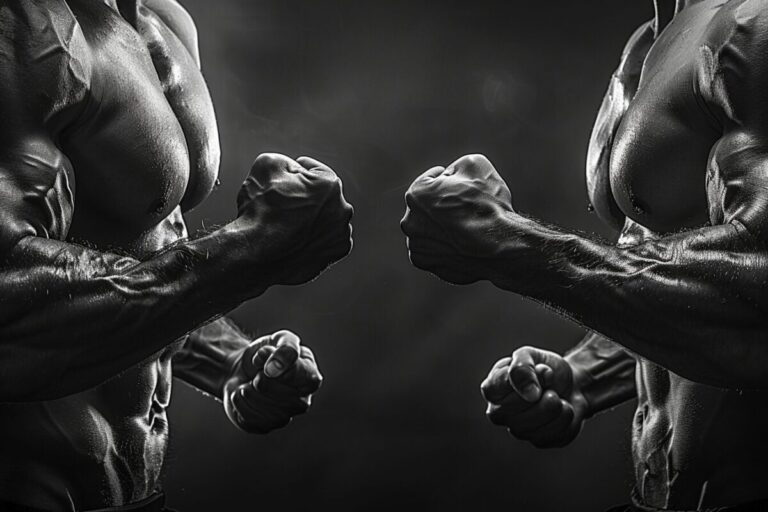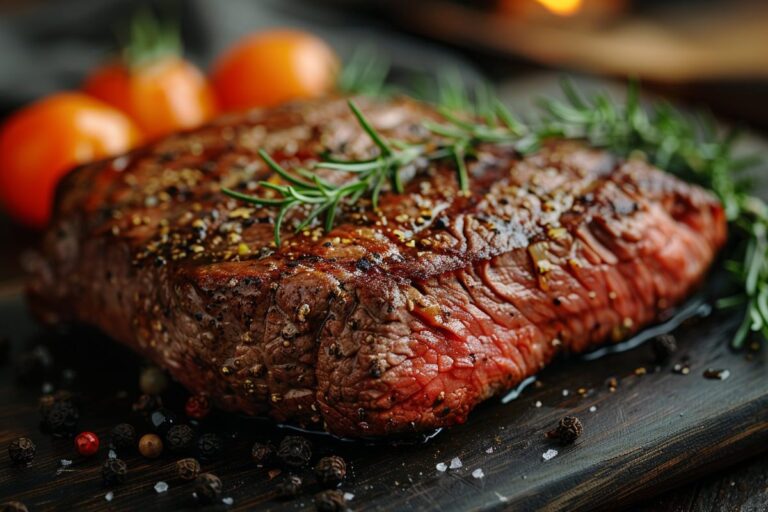Ever wondered why, despite powering through your lunges, you’re not quite feeling the burn where you expected—in your glutes? You’re not alone.
Lunges are a staple lower body exercise focusing on glute activation. However, many individuals face workout challenges when their efforts don’t translate into the muscle engagement they’re expecting.
So, why might this be the case?
Having a knowledge of how your body responds to different exercises is key to both improving form and maximizing benefits.
In this post, we’ll focus on the reasons why you don’t feel glute engagement in your lunges, and what you can do to fix it.
Understanding Glute Activation
If you’re doing lunges and not experiencing the burn in your glutes, it’s crucial to grasp the concept of glute activation. This understanding will enable you to optimize your workouts and effectively engage the appropriate muscle groups.
The Role of Glutes in Lunges
The glutes—comprising primarily the gluteus maximus and gluteus medius—are key players in lower body movements.
During a lunge, these muscles work together as part of the posterior chain to control the descent and power the ascent.
Specifically, the gluteus maximus is the powerhouse that drives hip extension, whereas the gluteus medius stabilises your pelvis. Proper activation of these muscles is crucial for an effective lunge that strengthens and tones your lower body.
Common Causes for Lack of Glute Engagement
Muscle groups can sometimes fail to engage due to a variety of reasons:
- Improper form: If your form is off, your quads or hamstrings might take over, leaving your glutes out of the equation. Focus on stepping back far enough and bending both knees at 90 degrees.
- Mind-muscle connection: Without consciously engaging your glutes, they might remain underactive. Try squeezing your glutes as you push back to standing.
- Muscle tightness or weakness: If other muscles are tight or your glutes are weak, they might not activate properly. Regular stretching and targeted glute strengthening exercises can help.
Remember, it’s not about just going through the motions; each lunge should be deliberate and focused on utilising your glutes to their full potential.
Proper Lunge Form and Technique
To effectively work your glutes while doing lunges, it’s important to focus on your form and technique. Let’s look at the key things you should pay attention to in order to engage your glutes the most during this exercise.
Key Points for Effective Lunges
Foot Placement: Your front foot should be flat on the ground, and the back heel lifted. Keep your feet hip-width apart to maintain balance.
Knee Alignment: As you lunge, your front knee should bend and align directly over your ankle, not extending past your toes. The back knee should hover just above the floor.
Hip Position: Drive your hips back and down, keeping them squared and level. This activates your glutes more intensely.
Movement Fluidity: Your descent should be controlled, lowering your body straight down, then driving back up with power primarily from your front heel.
Maintaining Neutral Spine During Lunges
Posture: Keep your back straight and chest lifted throughout the movement. This not only protects your spine but also ensures proper muscle recruitment.
Core Engagement: Actively engage your core muscles to help maintain a neutral spine. This stabilisation is crucial for an effective and safe lunge.
Enhancing Mind-Muscle Connection
Focus: Before you lunge, take a moment to mentally focus on the muscles you’re about to engage, especially the gluteus maximus.
Contraction: As you lift from the bottom of the lunge, concentrate on forcefully contracting your glutes. This conscious effort amplifies activation and results.
Lunge Variations for Glute Activation
If you’re looking for ways to feel the burn in your glutes during lunges, opting for variations tailored to glute activation is key. Let’s explore some targeted lunge exercises that are sure to fire up those muscles.
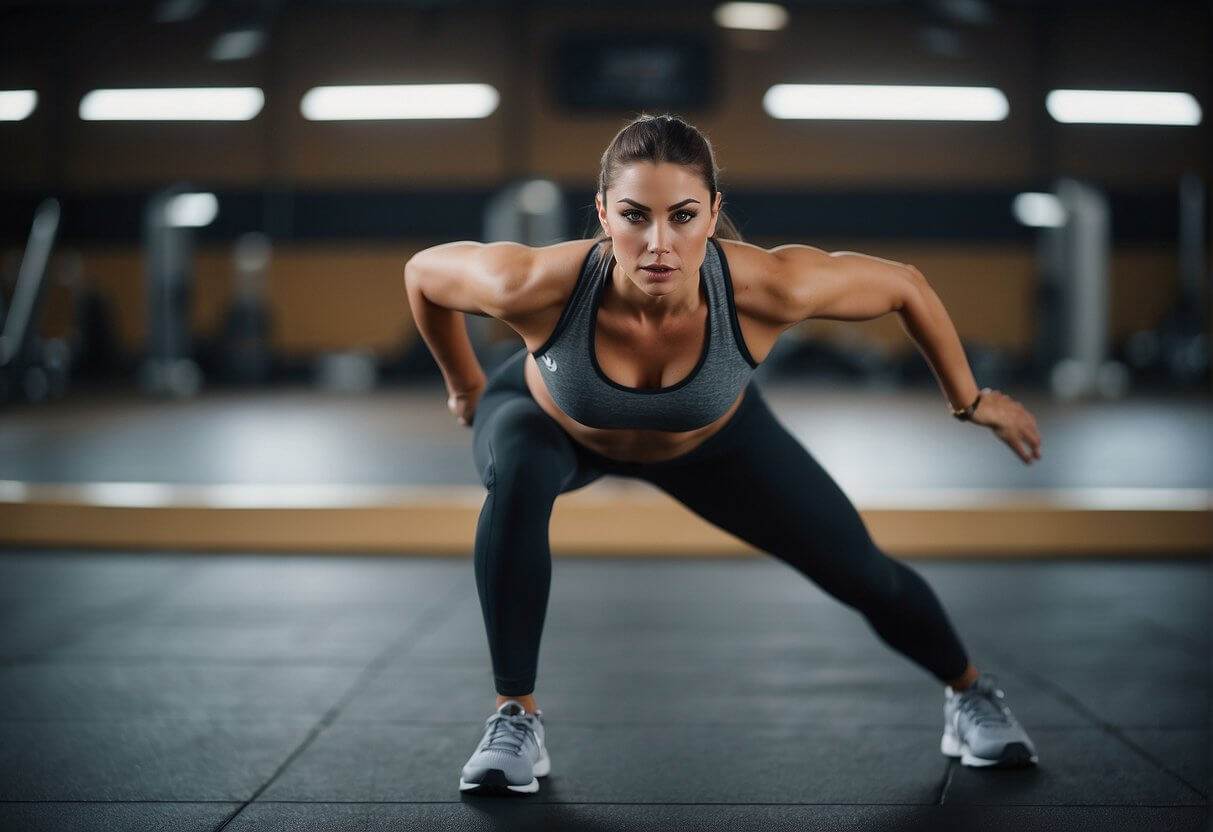
Reverse Lunges
Reverse lunges are an excellent variation to enhance glute engagement. By stepping backwards instead of forwards, you shift the workload more towards your glutes rather than your quads.
To do a reverse lunge, stand with your feet hip-width apart, then step one leg back and lower your hips until both knees are bent at about a 90-degree angle. Make sure to keep your chest lifted and your core engaged to maximise the benefits.
Split Squats and Their Impact
The split squat may resemble a lunge, but it’s a static variation focusing on one leg at a time.
When performing a split squat, your stationary position allows for greater tension on the glutes, especially if you lean slightly forward while maintaining good posture.
Studies have shown that various dumbbell-carrying positions can alter muscle activity, which means that by experimenting with where you hold the weights, you can further emphasise glute activation.
The Role of Glute Bridges in Lunges
Integrating glute bridges into your lunge routine can increase glute activation. Although not a lunge variation, performing a glute bridge before lunges can act as an activation exercise, waking up your glute muscles so they’re ready to work harder during the lunges.
To do a glute bridge, lie on your back with knees bent and feet flat on the floor, then lift your hips towards the ceiling, squeezing your glutes at the top of the movement.
Common Form Mistakes
When performing lunges, the effectiveness of the exercise largely depends on maintaining proper form. Identifying and rectifying common mistakes can enhance glute activation and ensure you’re working the right muscles effectively.

Mistakes That Prevent Glute Activation
Leaning Posture: Leaning too far forward during a lunge can shift the focus from your glutes to your quadriceps. A common error is neglecting to keep your torso upright, which is crucial for targeting the glutes.
Step Length: A short lunge distance may lead to inadequate hip extension, preventing your glutes from engaging fully. Similarly, an excessively long step can lead to overstretching and reduce stability, hence diminishing glute activation.
Impact of Incorrect Form on Muscle Activation
Quadriceps Focus: If you find the front of your thighs burning more than your glutes, it’s likely your form is quadriceps-dominant. Ensure you’re not pushing mainly from the ball of your foot, which can bypass glute engagement.
Technique Correction: Making minor adjustments to your form can significantly shift the workload to your glutes. Focus on driving through your heel when coming up from a lunge and consciously engage your glutes throughout the movement.
How Your Anatomy Affects Your Glute Training
To maximize your glute muscle activation during lunges, it’s crucial to understand how your body works. Let’s explore the mechanics of your body to help you reach your fitness goals more efficiently.

Pelvic and Hip Mechanics
Your pelvis and hips play pivotal roles in leg exercises. The position of your pelvis affects your body’s alignment and influences how your muscles are activated during lunges.
If your pelvis tilts too far forward, known as an anterior pelvic tilt, it could cause your glutes to engage less while shifting the effort to other muscles.
Hamstrings and Quads
Muscle balance is all about collaboration. Your hamstrings and quads should work together smoothly, but if one is overpowering the other, you might not feel lunges in your glutes.
It’s a delicate balance: overactive quads can overshadow weak hamstrings, leading to inadequate glute activation.
Core and Lower Back Support
A strong core supports your lower back and keeps your torso stable, essential for effective lunging. However, if there’s an over-reliance on your lower back—maybe due to a weak core—your glutes may not be shouldering their fair share of the workload.
By bracing your core, you take the pressure off your lower back and help redirect the focus to your glutes.
Exploring Related Strength Exercises
When you’re wondering why lunges don’t seem to be targeting your glutes effectively, it’s worth comparing them to other strength exercises that are known for their glute-activating properties. Let’s take a closer look at these and understand how each one challenges your glutes.

Comparing Lunges to Squats
Lunges are a dynamic exercise that challenges balance and targets the lower body, with a particular emphasis on the quadriceps, hamstrings, and, ideally, glutes. However, not everyone feels lunges in their glutes, which could be down to technique or individual body mechanics.
On the contrary, squats are a foundational exercise known for effectively working the glutes, especially when performed with proper form. The depth and width of your stance can greatly influence glute activation during squats.
The Importance of Glute Bridges and Hip Thrusts
If lunges aren’t hitting the spot for your glutes, turning to glute bridges and hip thrusts might be the answer. Both exercises specifically target the glute muscles with less strain on the knees.
Glute bridges are great for beginners, with your back on the floor and thrusting the hips upwards. Progressing to hip thrusts, where your shoulders are elevated on a bench, increases the range of movement and potential for strength work in the glutes.
Cross-Training for Glute Strength
Cross-training with a variety of exercises can enhance your glute strength and ensure balanced muscle development.
Incorporating activities such as deadlifts, kettlebell swings, or even yoga can complement your lunge routine. These exercises promote muscle growth, power, and endurance in your glutes, contributing to overall lower body strength that extends beyond what lunges alone can offer.
Impact of Lifestyle and Habits on Glute Activation
If you’re wondering why lunges aren’t firing up your glutes as expected, consider this: your daily habits and lifestyle play a significant role in muscle activation.
The all-too-common prolonged sitting and sedentary behaviours can lead to weakened glute muscles, often termed ‘dead butt syndrome’. But you can counteract these effects by understanding and modifying certain lifestyle aspects.

Effects of Prolonged Sitting
Dead butt syndrome, also known as gluteal amnesia, occurs when your glute muscles forget how to activate correctly. This often happens when you sit for too long.
When you’re seated, your hips are in a constant state of flexion, and your glutes are essentially off-duty. Over time, this can lead to weak gluteal muscles. Weak glutes can make it harder for you to do exercises like lunges.
- Recommendations: Take regular breaks to stand and walk
- Incorporate specific strength training exercises for your glutes
The Connection Between Walking and Glute Function
Walking isn’t just about getting from point A to B; it’s an opportunity for gluteal activation.
With each step, your glutes should work to extend the hip. However, if your walking gait is off, perhaps due to tight hip flexors or previous habits, your glutes might not be working as hard as they could be.
- Tip: Focus on extending your hip fully with each step to encourage better glute function.
Athletes Versus Sedentary Individuals
Unlike sedentary individuals, athletes typically have a robust level of glute activation. This is due to rigorous training routines that emphasise movement and strength.
However, even active individuals can experience underactive glutes. This can happen if their training isn’t balanced or if they neglect specific glute-strengthening exercises.
- Key Point: Balance is essential – athletes need to incorporate movements that specifically target the glutes to maintain strength and proper activation.



